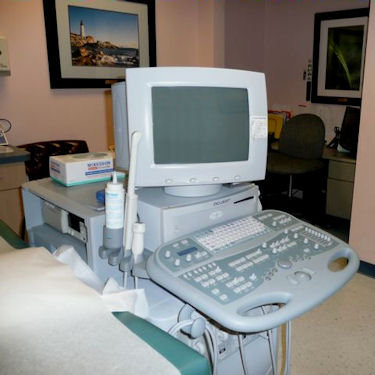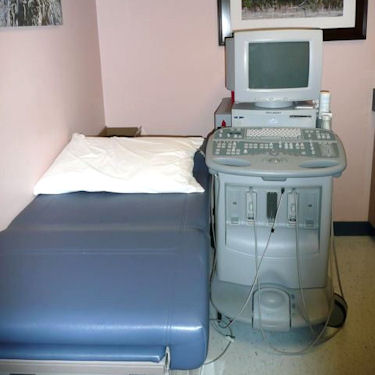

Echocardiogram (Echo, 2D Echo, cardiac ultrasound, echocardiography)
The echocardiogram is an ultrasound of the heart. Using standard ultrasound techniques, two-dimensional slices of the heart can be imaged. The M-mode and 2-D Echo evaluates the size, thickness, and movement of the heart structure (chambers, valves, etc.). In addition to creating two-dimensional pictures of the cardiovascular system, the echocardiogram can also produce accurate assessment of the velocity of blood and cardiac tissue at any arbitrary point using pulsed or continuous wave Doppler ultrasound.
Doppler is a special part of the ultrasound examination that assess blood flow (direction and velocity). During the Doppler examination, the ultrasound beam will evaluate the flow of blood as it makes it way though and out of the heart. This information is presented visually on the monitor(as color images or grayscale tracings and also as a series of audible signals with a swishing or pulsating sound). This allows assessment of cardiac valves areas and function, any abnormal communications between the left and right side of the heart, any leaking of blood through the valves (vascular regurgitation), and calculation of the cardiac output as well as the ejection fraction.
